TrueNAS Scale, Unraid, and OpenMediaVault stand at the apex of the Network-Attached Storage OS landscape, with each distribution featuring its own perks and quirks. However, they’re far from the only options at your disposal. Even without harnessing the power of virtualization, you can turn Proxmox into a reliable file-sharing server once you arm it with the right set of packages – and the same holds for Debian, Fedora, and other general-purpose distributions.
But on the other side of the popularity spectrum, you’ve got obscure distributions that are seldom discussed by tinkerers, data hoarders, and home labbers. In my search for wacky projects and cool DIY ideas, I recently stumbled upon XigmaNAS, a FreeBSD-powered distribution designed for storage servers and NAS solutions. Having played around with it over the weekend, I’ll admit that XigmaNAS deserves far more credit than it currently receives.
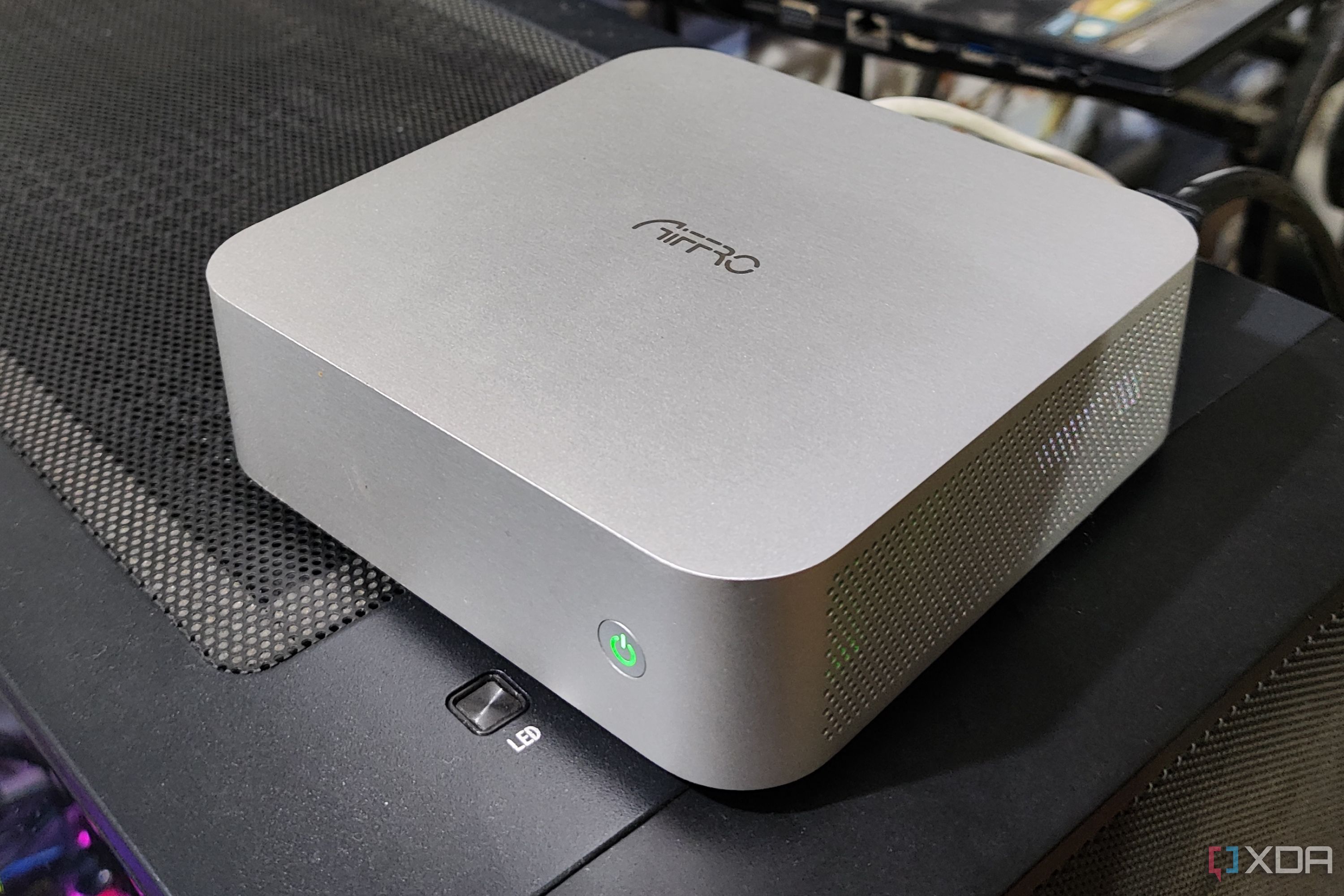
Related
Building your own NAS? These 5 operating systems are the best
If you prefer building your own NAS from scratch, here are five operating systems you need to check out
XigmaNAS is fairly easy to set up
But its NIC support leaves a lot to be desired
Before I go over the perks and features offered by XigmaNAS, I’ll quickly highlight the installation process and the minor issues I faced along the way. Initially, I planned to bring my old PC out of retirement by using it as the test subject for XigmaNAS, but I ended up using ZimaBoard 2 after XigmaNAS failed to detect my high-speed NIC and adapter cards. The ASRock B550 Phantom Gaming motherboard on my old system can only handle 1 GbE speeds, but I wanted to test the OS’ performance with my 10 Gigabit networking stack.
Unfortunately, XigmaNAS didn’t work with my TX401 card, nor did it detect the TP-Link USB-to-Ethernet adapter. The onboard Ethernet card worked flawlessly, which is what I used when setting up the OS. Since I had the ZimaBoard 2 lying around, I figured I could leverage its 2.5G Ethernet connection to grab the transfer speed metrics while leaving the virtualization tests to the 6-core, 12-thread Ryzen 5 1600 processor on my old PC.
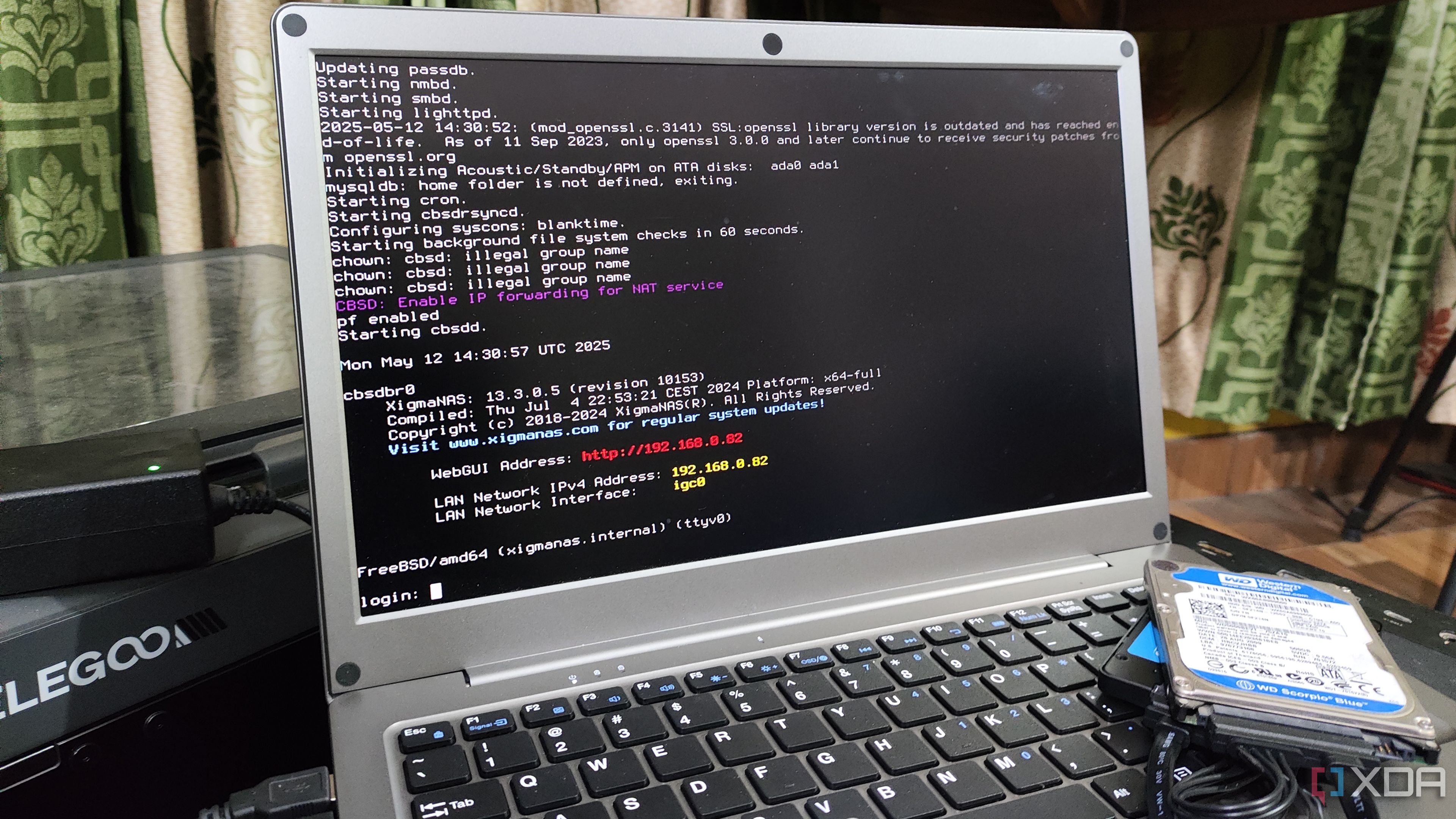
Other than this minor roadblock, XigmaNAS didn’t give me any headaches when I tried to set it up. Since I'm a member of the ZFS faction, I picked the option that let me access the Advanced ZFS Installer and left the rest of the settings at their default values. After giving my A-OK at the final confirmation screen, the installation wizard worked its magic at breakneck speed, and XigmaNAS was set up in less than the time it takes to finish reading this sentence.
It includes most NAS-centric features you could ask for
It’s compatible with the all-powerful ZFS file system
Between its Copy-on-Write technology, superior RAID support, snapshot utility, and self-healing provisions, ZFS is hands-down one of the best file systems for storage servers. As someone who uses ZFS on practically every home server and NAS solution, I was happy to see native support for the file system inside XigmaNAS’ web UI.
While we’re on the subject, XigmaNAS has a rather minimalist UI, which can be a pro or con depending on your aesthetic sense. Difficulty-wise, its interface is a lot harder to pick up than Unraid or even TrueNAS Scale and lacks the extra bells and whistles you’d find in its rivals. But compared to other obscure systems like OmniOS and SmartOS, XigmaNAS has a somewhat simple UI that you can get accustomed to, especially once you go over its documentation.
Other than that, XigmaNAS includes decent backup and snapshot provisions, though the latter is a bit hard to find since it’s hidden deep within the Disk tab. You can also whip up a High Availability Storage (HAST) setup in XigmaNAS – a feature iXsystems locks behind a paywall for its TrueNAS series. The FreeBSD distro is also great at maintaining process logs, but I wish its monitoring provisions were a little more detailed.
Native Rsync and Syncthing support is a game-changer
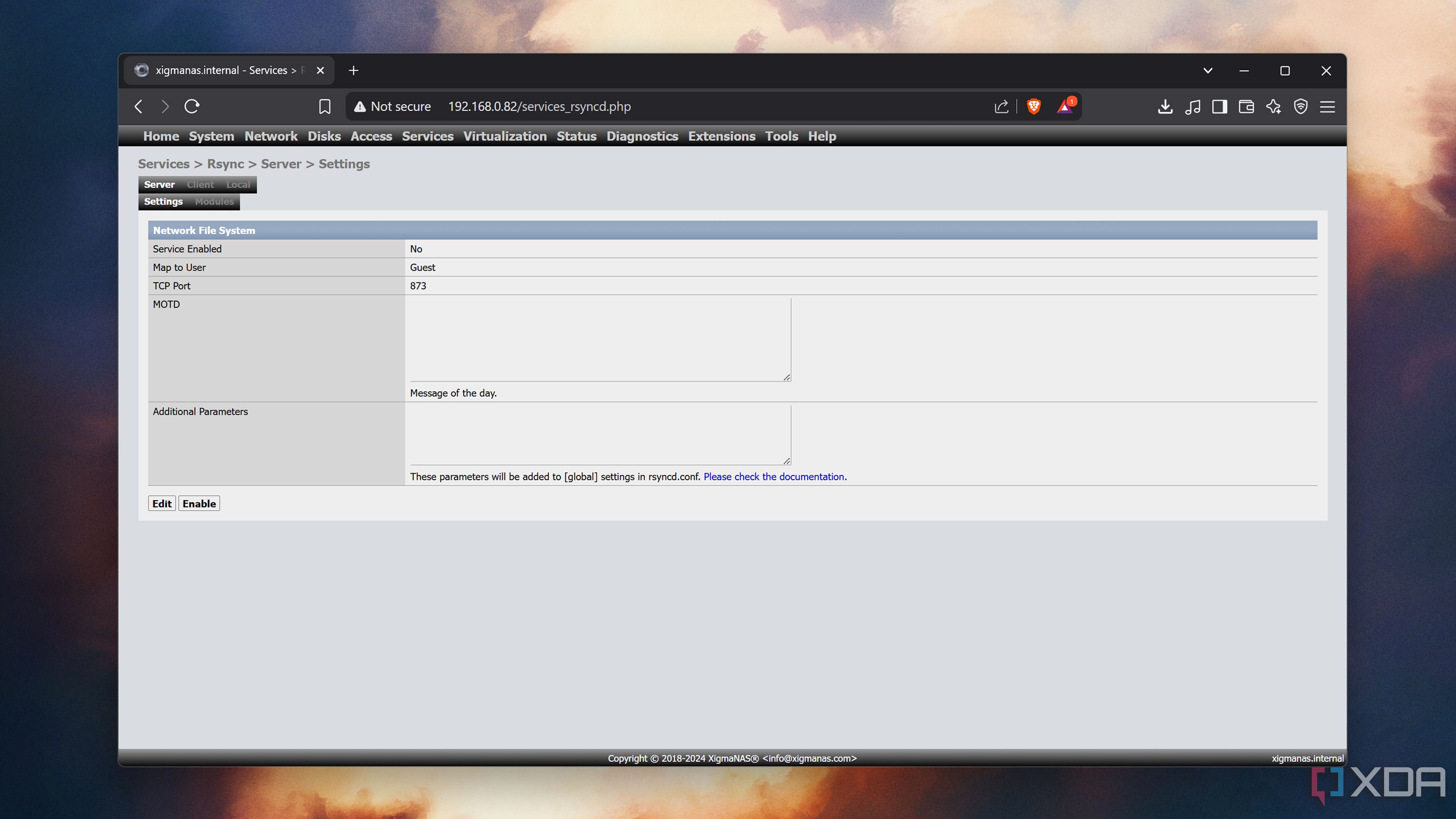
Hovering over the Services tab reveals an array of tools you can integrate into your storage setup. While the ability to control your UPS units, web servers, and MariaDB records is pretty neat, Rsync and Syncthing tools are what you’re really here for.
Designed to back up data from the other devices in your home lab, Rsync is helpful when you want to periodically mirror your essential files to the XigmaNAS server. Meanwhile, Syncthing is more of a syncing tool than a backup utility, as it runs 24/7 to ensure the changes made in your original files are immediately saved to the storage pool in your XigmaNAS setup.
Fast transfer speeds, with okayish virtualization performance
You also get a couple of network sharing protocols
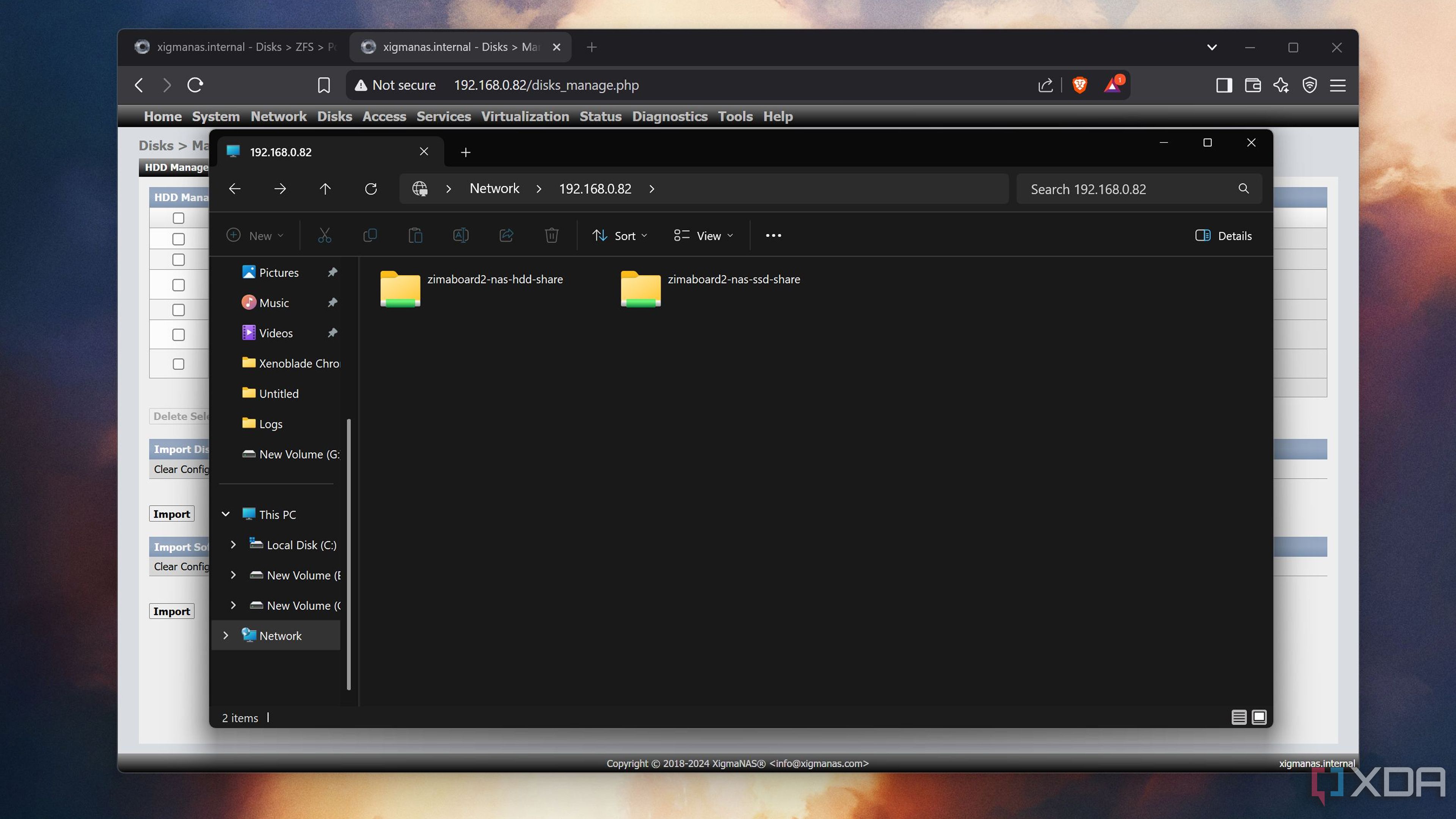
Another useful aspect of XigmaNAS is its support for multiple sharing protocols. Aside from the usual Samba (with Active Directory) implementation of the SMB protocol, you also get to configure AFP and NFS shares. Then there’s the block-level iSCSI protocol, and you even get the option to deploy FTP and TFTP servers on the distro.
|
Read: 158.27 MB/s Write: 154.24 MB/s |
Read: 296.29 MB/s Write: 296.13 MB/s |
|
Read: 157.73 MB/s Write: 152.9 MB/s |
Read: 200.96 MB/s Write: 251.98 MB/s |
|
Read: 152.7 MB/s Write: 7.35 MB/s |
Read: 186.34 MB/s Write: 22.50 MB/s |
|
Read: 16.33 MB/s Write: 6.26 MB/s |
Read: 16.54 MB/s Write: 12.30 MB/s |
Since I have multiple devices configured in my home lab, I mostly rely on Samba shares for my NAS workloads – and that’s precisely what I used for the tests. For reference, I created two separate ZFS pools in XigmaNAS: one for my 2.5-inch desktop HDD and another for a similarly-sized SSD. The synthetic CrystalDiskMark tests were pretty good, though the HDD averaged at the 60-70MB/s mark during real-world file transfers. Considering my ZimaBoard 2 SBC only supports a 2.5G connection, the results are quite satisfactory, even though I really wish I could run the benchmarks at 10GbE speeds with an equally fast NVMe drive.
phpVirtualBox is a real pain to configure, though
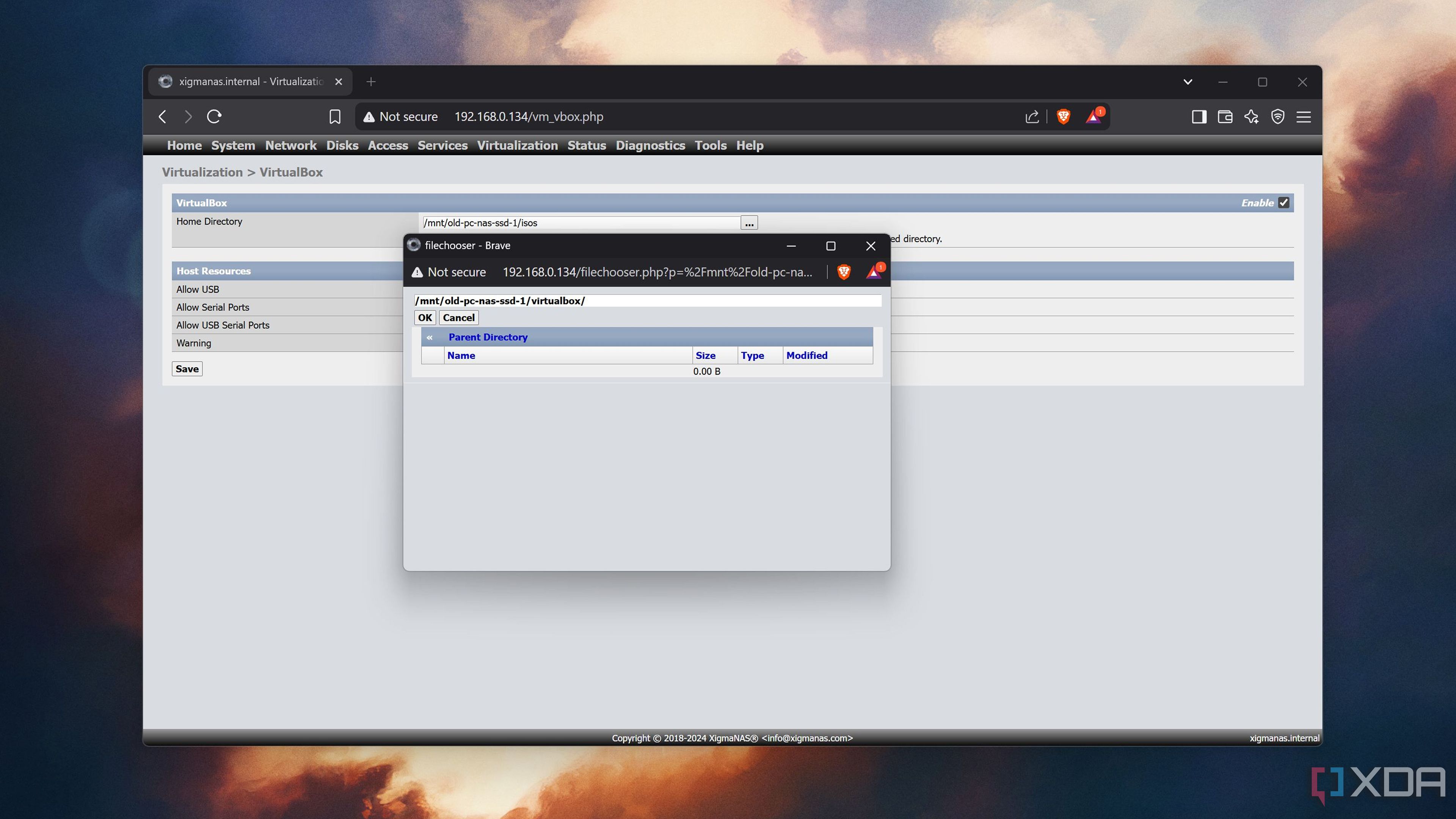
File-sharing and data archival may be the essential use cases of a NAS, but modern storage servers are capable of a lot more than that, especially if you’re rocking a custom-built system. Virtualization is one such service you’re bound to leverage at some point, and the lightweight XigmaNAS is decent at handling VM-heavy tasks, assuming you’re willing to put up with a couple of issues.
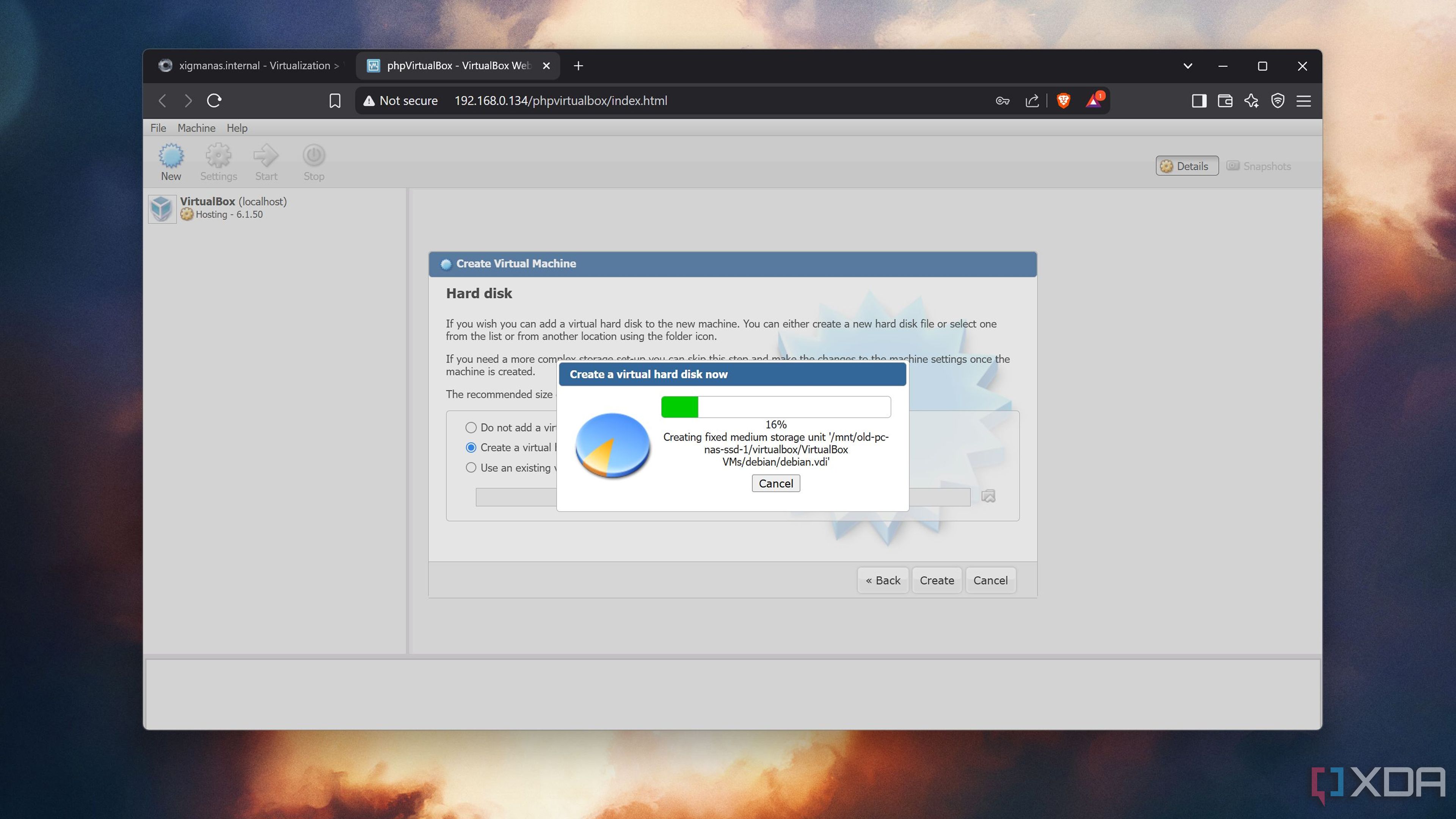
Due to its FreeBSD roots, XigmaNAS doesn’t rely on the Xen or KVM hypervisors, and instead uses VirtualBox for its virtualization-heavy tasks. Unfortunately, phpVirtualBox acts as the frontend for the hypervisor, and working with it is an absolute nightmare. Unlike the VirtualBox client you’re familiar with on Windows or macOS, phpVirtualBox has a clunky interface. The particular version available on XigmaNAS doesn’t support noVNC either, so you’ll have to use Remote Desktop or a similar tool just to access your virtual machines.
If you’re familiar with FreeBSD, you may be aware that it uses jails instead of typical Docker containers. By default, XigmaNAS requires you to dabble in heavy terminal commands to set up jails, though you can configure the xigmajail extension to whip up these isolated environments from the web UI. That said, not being able to deploy jails with the press of a button can be a real buzzkill if you’re coming from TrueNAS Core and want an easy way to tinker with jails.
Should you look into XigmaNAS?

If you’re looking for a responsive, stable, and lightweight distribution for your storage server, XigmaNAS is a decent alternative to the popular NAS operating systems out there, especially for folks who prefer FreeBSD to Linux. That said, its lack of jail management provisions, combined with a difficult UI and terrible hypervisor frontend, makes it hard to recommend the distro for hardcore tinkerers who love to self-host applications and services on their NAS.
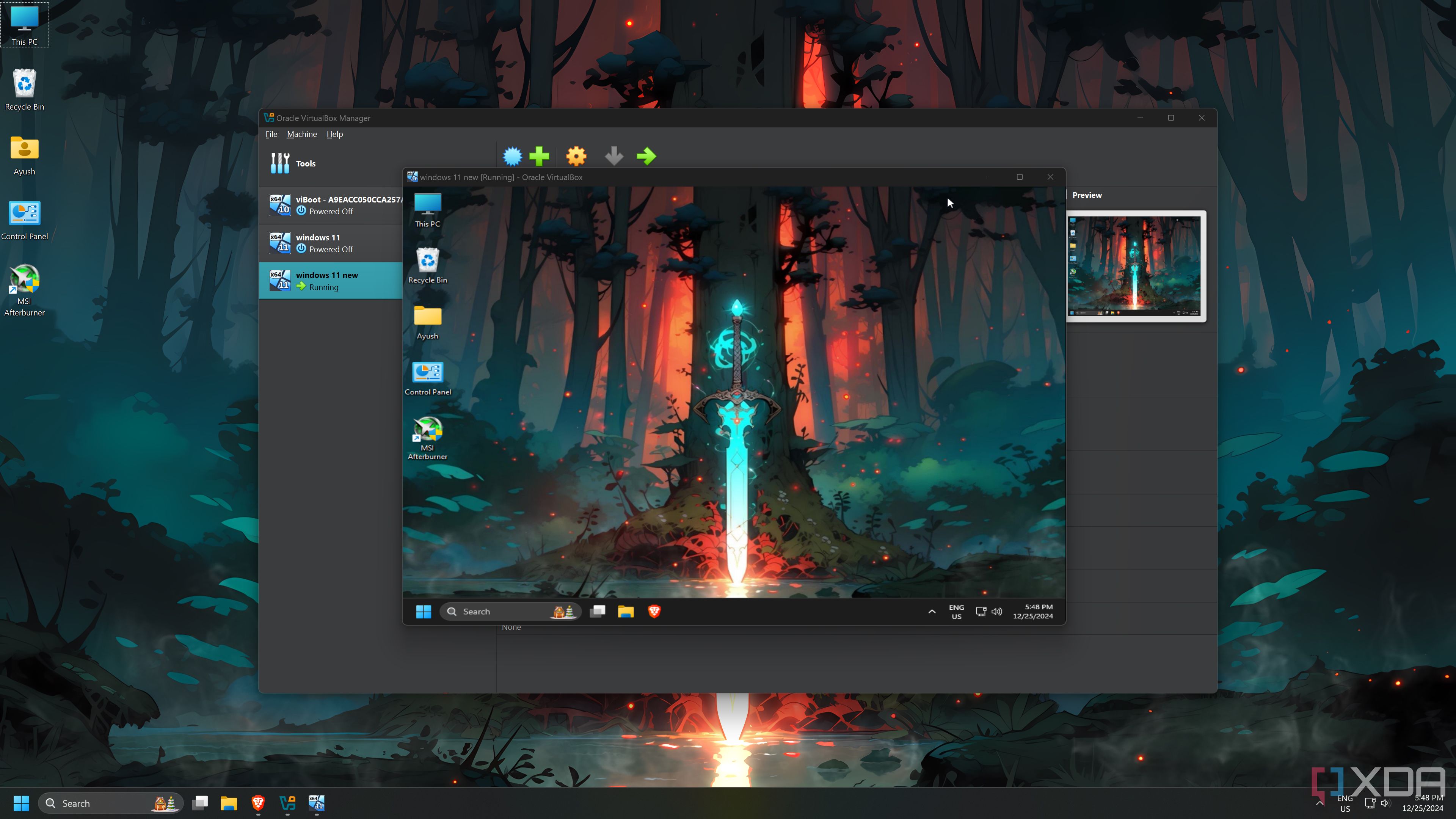
Related
How I virtualized my Windows 11 PC using Disk2vhd and VirtualBox
You'll need a beefy processor and lots of memory for this wacky project
.png)





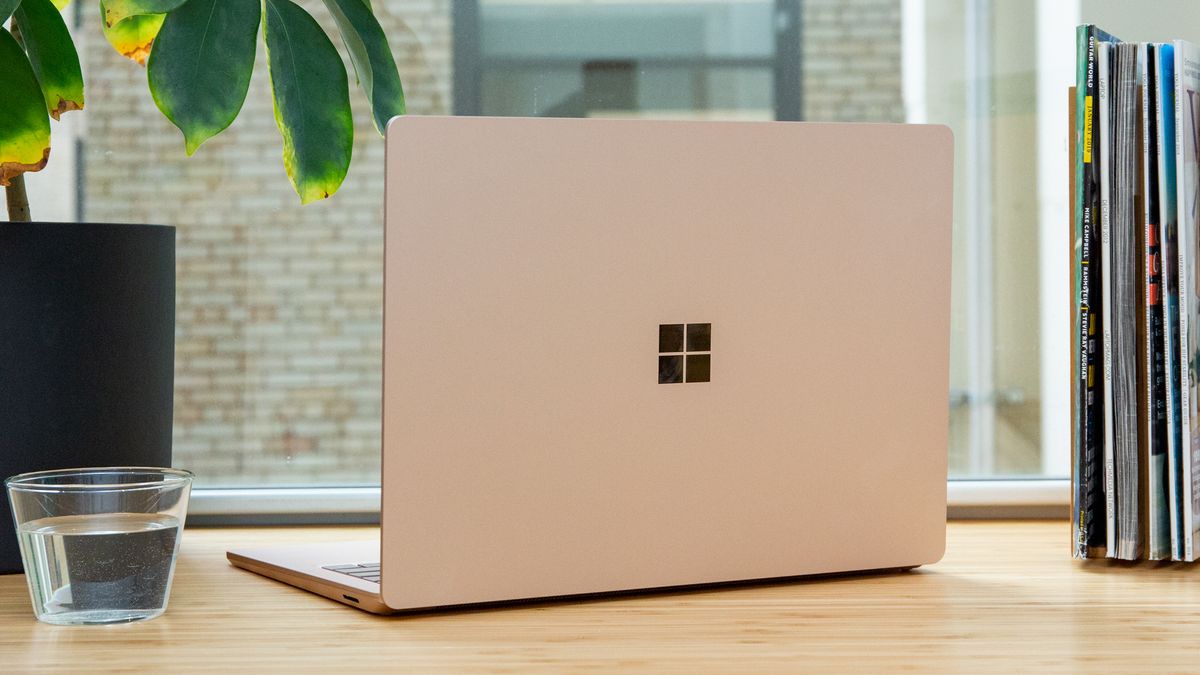





 English (US) ·
English (US) ·